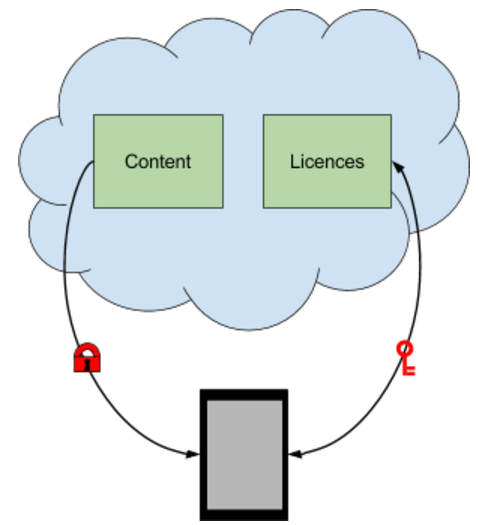Protection of audiovisual contents with DRM
Description
In the Multimedia Communications Group we have developed several solutions for the secure transmission of multimedia content. The aim of these Digital Rights Management (DRM) systems is to enable users to consume content while the rights owners ensure that such content can not be copied or redistributed illegally. 
At present, if you want to distribute copyrighted content such as movies, music, series, etc. rights managers require the distributor to use a certified DRM system.
We could define a DRM system, as seen in the figure, as a mechanism that makes it independent of being in possession of a content with the possibility of reproducing it. In this way, a user accessing a content can not play it (even if a copy is saved) if it is not in possession of a valid license when playing it.
For the usefulness of the system, it is necessary that the DRM system used be supported by many devices so as not to exclude potential customers. Among the most used DRM systems is Google Widevine. This system is available, among others, for more popular devices like Android, iOS, Chromebook and browsers Chrome, Firefox and Edge.
Researchers from the Multimedia Communications Group are certified by Widevine, one of the most important DRM systems on the market. Through this certification it is possible to encrypt the content with Google’s DRM. Also, an offline DRM system has been developed that allows the reproduction of encrypted contents despite not having Internet connectivity, which is very useful in means of transport that can lose the connectivity (for example, boats on the high seas or buses/trains in areas with little coverage).
